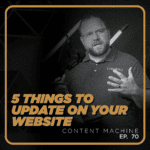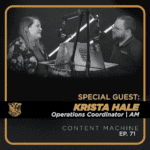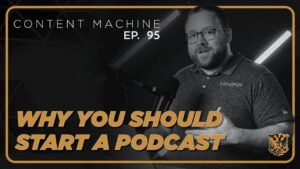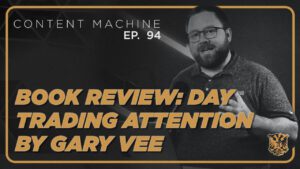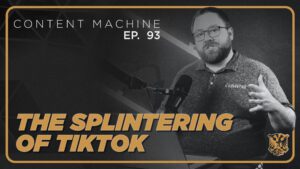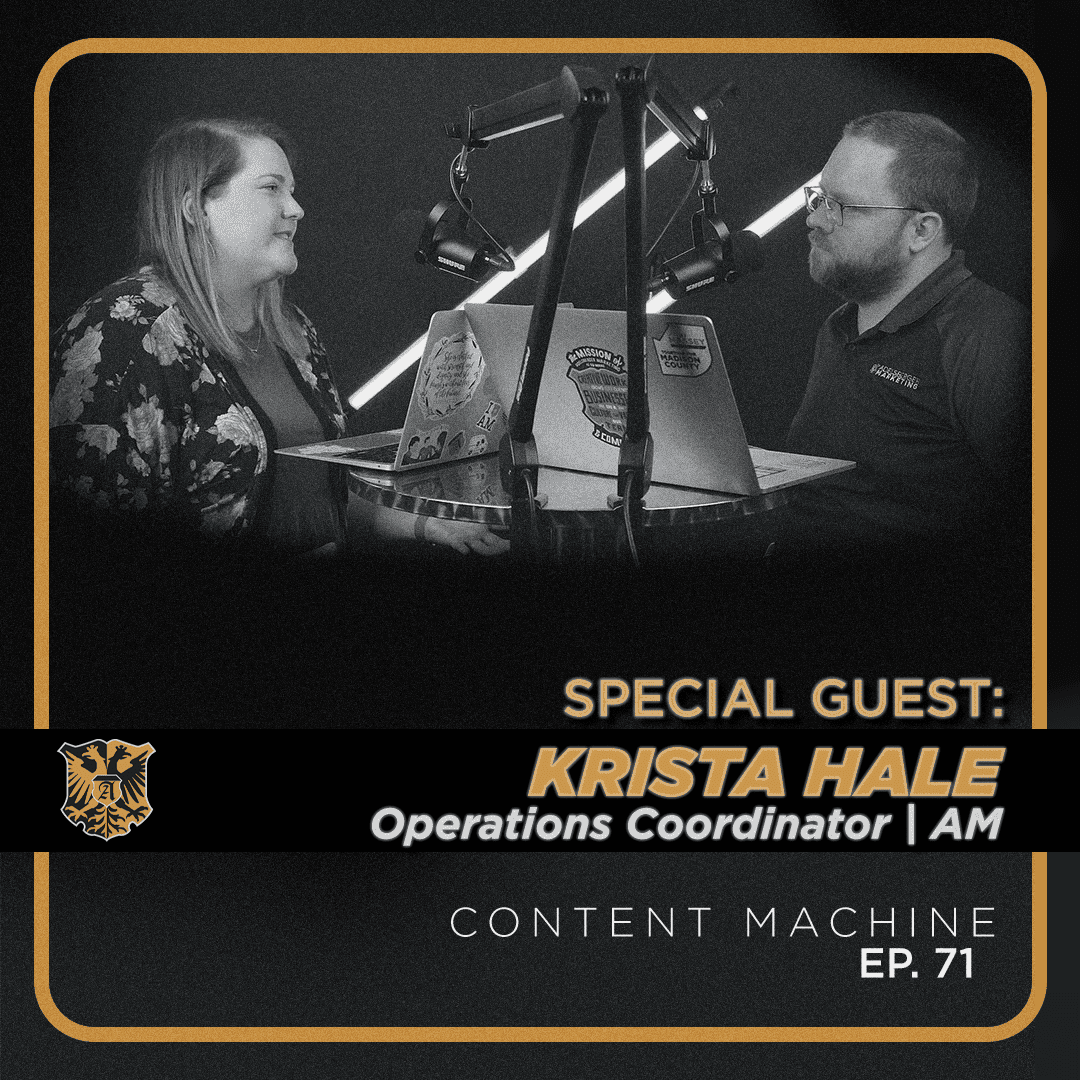
Kevin
Welcome to the Content Machine podcast. I’m Kevin Adelsberger, and this week we’re joined by Krista Hale. Krista is our project manager at Adelsberger Marketing, and I like to say she helps all the trains run on time. Krista, thank you for joining us today. I know that I forced you into this, so please forgive me later. All right. Krista, you wanted to talk about the onboarding process, and that’s something that I know that you’ve been working a lot on it for the agency, and we’ve made it a point to make it a better process since you’ve come on board. So what was the reason we started working on the onboarding process?
Krista
So one thing we noticed last year was that there was instances where we were either having to do rework or unexpected delays from the client. And so we decided that we needed something to change. And so I believe at the beginning of this year, we started reading Project Management for Humans by Brett Harned, just to help myself become better in my job. And so in Chapter 4, it talked about emphasizing getting to know the client. And so we do a really good job of doing that with our strategy sessions, getting to know the client as a business as a whole, getting to know their goals, and then seeing the opportunities that we can help them with. But we are missing the step in between the strategy session and getting the project started and just setting expectations from the very beginning to know how we work and to help them understand all those things. So then it just helped us be super clear on how we work with people so that they know what to expect from us.
Kevin
Yeah, absolutely. And so can you give us a brief overview of the onboarding process?
Krista
Yeah. So first off, I just start off with housekeeping things, questions of who’s the main point of contact. Probably my most important question that I ask just because it helps me know who I need to be always in touch with. And it’s helpful that there’s just one, because if there’s multiple points of contacts, then it can slow down the process and then not everyone responds or slow in responding. And so if there’s one person, it helps that just move along quicker. And then we just have other questions like, is there someone who’s going to be the final sign off for the project so that if not everyone’s deciding or coming to the same decision, that that person is just going to make the decision to go forward, basically. Then we ask about out of date, like out of office dates, whether or not they’re… So that we know, Okay, how do we plan, make sure that we get you the product or the projects beforehand, or how do we work that into our timeline? And then after we get through the housekeeping questions, then we talk about expectations for communication, what that looks like for me and our team, and then also what is expected from them.And then after we talk about communication, then we go through what their process is going to look like, how we handle our process, but then also what their specific project is going to look like. Every project is different, and so we try to make sure that we talk about their specific projects to give them an understanding of the big picture so that they know what to expect from us.
Kevin
Yeah. And I think that’s been really good, as we’ve seen. We’ve been testing that out over the last couple of months with new clients. So how important is the onboarding process in setting the tone for the client relationship?
Krista
Yeah. So the tone, I think a lot of it is it ensures that we’re both on the same page just to have a good outcome. But it also just strengthens our relationship with the client. A lot of times people know you, but they don’t necessarily know me. And with me being the main point of contact for most of the projects, you’re still involved. But it also helps me build that relationship with them so that we’re not just two people behind an email, we’re actual people. And so it just helps create that personal relationship. And then it just helps clarify expectations and just helps us know who the both points of contacts are. And it just helps us show them that they are committed to have an easy process for them.
Kevin
So everybody has to onboard a client one way or another? Yeah. So how do you feel like we’ve made this process feel like Adelsberger marketing?
Krista
So we wanted to make a slideshow just to help them visualize everything when I talk with them about it. One of our core values is fun professionalism. We wanted it to be something where, yes, you get the point across, but also it’s just visually fun. Katie Howardon on our team illustrated a lot of the fun elements and graphics for the slideshow video. I think it really added something to show just how much our team is not just this is the way it is, but we have fun while we do it.
Kevin
How do you communicate that process and set those expectations?
Krista
So we really just want to emphasize that each project is different. And so we go through each of their projects and we go by step by step so they understand the big picture. Obviously, it’s not going to be perfect. Every project has little different things happen. But we want to make sure that they have a big understanding and so that they’re not surprised on how the process is going to work. So I do that towards the end of the call. And then before that, we talk about the waterfall process, and that’s how we get everything approved. So the reason why we do that is so that after each step, we get the buy-in from the client so that it’s not just at the end of the project, oh, this is it. And they had no idea that that’s what it was going to be. And so for example, with our websites, we start out with just a black and white sketch of the home page, and we get that approved. And then work on the content, and we get that approved. So after each step, the client knows what to expect so that later at the end, they’re not surprised.
Krista
And so it also helps us know that we’re on the right track for them and that we’re doing the work that they like, because ultimately we want client satisfaction, but we’re also wanting to make sure that they like it.
Kevin
So are there any strategies to help maybe others can see that helps us be implemented effectively?
Krista
So with Adelsberger Marketing, we have a policy that we call Texas Size 10.4, which you created from a TV show that I’m supposed to not watch. But we do this. It helps alleviate any concern for message, that it’s been delivered or that you’ve seen it, because we’re messaging through Slack, and so we’re not in person. And so that’s the same thing with the clients where we’re emailing. Majority of the time, sometimes we have Zoom calls or whatever in-person meetings. But what this looks like in application is I’ll send an email to a client, and we’re not necessarily We’re not necessarily looking for an answer for the question or whatever that I’m asking for, but we’re looking for, Hey, I’ve received this. I’m working on it. I’ll get it back to you in so many times. Some sign-up life.
Kevin
Some sign-up life, yeah.
Krista
Yeah. And so we want to help the client, but we need help from them in the sense of we need to know that they’re there and that they’re working on it so that I don’t have to constantly email you every week and get tired of me. So that’s something that we’ve implemented with the client just to help communication.
Kevin
What are some of the best practices that you believe are essential for a smooth and effective onboarding process?
Krista
I definitely think setting clear expectations, and that’s what we’re doing with the onboarding process. But being as super clear as we can and talking to them about it and making sure that they are in agreement.
Kevin
And we’re talking about things like how we communicate and timeline and the approval process, making sure that they’re 100 % understanding. If they don’t agree to these things, then we’ve got a problem with how this is going to work.
Krista
Exactly. And I think sometimes not all the time is it going to be exactly how… Sometimes we need to adjust, like with the client. Sometimes it can’t just be one point of contact because there’s multiple buy-ins and they need to all be involved. And so then the process helps us see, okay, how do we need to adjust for the client to make sure that it still works smoothly? And so we’re always trying to make it as easy as possible for the client, but also keep the project moving. And then I think it’s also like going along that line of listening and understanding what the client needs. So if they need to adjust in some way, we can try to accommodate as best as we can to help them feel like we are listening to them, but also that we’re wanting a good product at the end of the day.
Kevin
Well, Krista, thank you so much for the work you do at Adelsberger Marketing. You’re doing great as our operations manager. And thank you for joining us today on the episode. If you have any questions about project management, email Krista. Don’t email me. Email Krista. But we would recommend the book, Project Management for Humans by Brett Harn. It was a good conversation starter for us over the last couple of months as we worked on improving these processes. So we’ll stay tuned for future episodes of the Content Machine podcast. And once again, Krista, thank you for joining us. Thanks.

